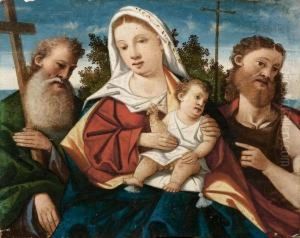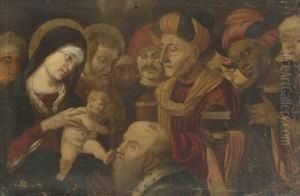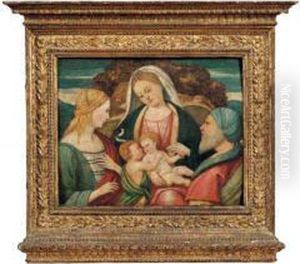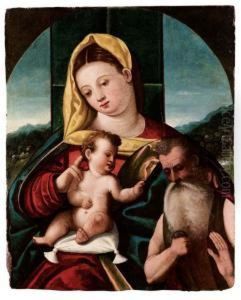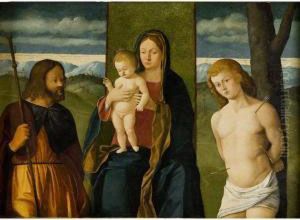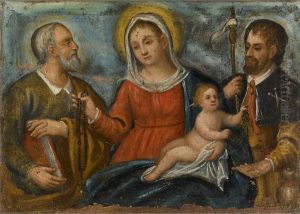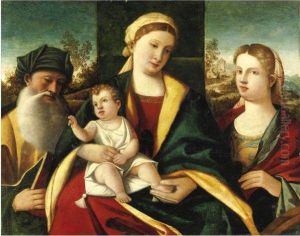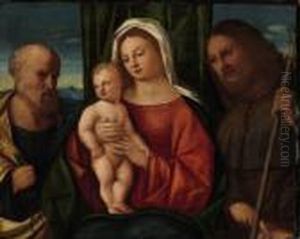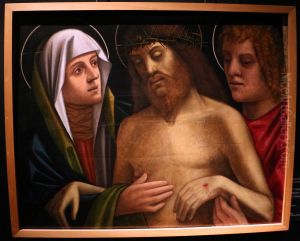Francesco Rizzo Da Santacroce Paintings
Francesco Rizzo, also known as Francesco da Santacroce or Francesco Rizzo da Santa Croce, was an Italian painter of the Renaissance period. He was born around 1474 in the town of Santacroce, near Bergamo in the region of Lombardy. Little is known about his early life and training, but it is speculated that he may have been a student of Giovanni Bellini or at least strongly influenced by the Bellini family and other Venetian masters like Alvise Vivarini due to the stylistic characteristics present in his artwork.
During his career, Francesco Rizzo established himself in Venice, where he worked on religious commissions for local churches and confraternities. His works were predominantly religious in nature, featuring altarpieces, devotional paintings, and frescoes. Rizzo's style is characterized by its strong color palette, attention to detail, and a clear influence of the Venetian School's use of light and color. While his work was once overshadowed by the more famous Venetian painters of his time, modern scholarship has begun to appreciate his contributions to the art of the Renaissance.
Francesco Rizzo da Santacroce's paintings often depicted scenes from the life of Christ, the Virgin Mary, and the saints. His altarpieces were known for their architectural settings and serene figures imbued with a sense of piety and devotion. Unfortunately, due to the common practice of artists of this period not signing their works, many of Rizzo's paintings were for a long time attributed to contemporaries or remained anonymous.
The exact date of Rizzo's death is not known, but it is believed that he died around 1545. Despite the lack of comprehensive documentation, his surviving works continue to be studied and admired for their beauty and historical value. They are significant in understanding the development of Venetian painting and the diffusion of Renaissance ideas throughout Italy.
